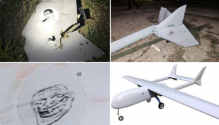According to an article in the Economist, Ukrainian military inventors hope to make their breakthrough with strike drones and the turning-point may be coming faster than people think. The article also says the Russians are very good at electromagnetic defence and Musk, worried about the escalatory effect after a naval-drone attack on Russia’s Black Sea fleet in October, now Starlink uses geofencing to block the use of its terminals.
Quote:
Mykhailo Fedorov, the 32-year-old deputy prime minister responsible for both Ukraine’s drone programme and its digital transformation, says the turning-point may be coming faster than people think. A number of changes are about to make a big impact, he says. The army has completed a big restructuring, establishing 60 new attack-drone squadrons, at least one in every brigade, with separate staff and commanders. This is the first reform of its kind anywhere in the world. Ukraine’s military doctrine has been updated to include (classified) guidelines on drone use. The defence ministry has created a new board to co-ordinate the work of drone producers. There has been a drive to deregulate: removing import and certification barriers. And this month is marked by the launch of a new military “cluster” venture designed to link Ukrainian military tech with international companies and capital.
A defence-industry insider, speaking on condition of anonymity, confirms that the army is due to gain “significant and high-tech capacity” in the coming weeks and months. That said, it will still struggle against the Russians, he cautions. Their own Iranian-designed drones have tormented Ukrainian cities since the start of winter. The war is also testing drone technologies as never before: over a large, contested airspace and against sophisticated electronic-warfare systems.
Only a few military systems can perform well. “The Russians are very, very good at what they do,” the industry source says. “They are performing black magic in electromagnetic defence. They can jam frequencies, spoof gps, send a drone to the wrong altitude so that it simply drops out of the sky.” The threat from ground-based air defences means that Ukrainian reconnaissance drones struggle to see more than 15km behind Russian lines, says one expert with recent experience of observing drone operations.
At an early stage the Ukrainians appeared to pin hopes for controlling drones behind Russian lines on Elon Musk’s Starlink satellites, which work at frequencies and in numbers that Russian systems struggle to jam. A naval-drone attack on Russia’s Black Sea fleet in October reportedly made good use of this gap. But Mr Musk, apparently worried about the escalatory effect of such moves, has stepped in where Russian technology proved unable to. Starlink now uses geofencing to block the use of its terminals—not only above Russian-occupied territory inside Ukraine, but also, according to a Ukrainian military intelligence source, over water and when the receiver is moving at speeds above 100km per hour. “You put it on a boat at sea and it will simply stop working,” he says. So Ukraine’s drone developers now use a range of other, more expensive communication systems, with multiple systems often on the same vehicle. The success of the attack on February 28th in getting so close to Moscow suggests that Ukraine may be getting close to a solution that works.

